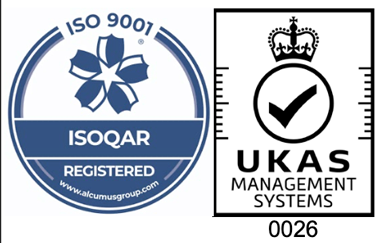How is Rubber Made? The Most Common Rubber Manufacturing Processes
13th May, 2022
From tyres on vehicles to the soles of our trainers, we heavily rely on rubber in our everyday lives. But have you ever stopped to think, how is rubber made? In this article we take a look at the most common rubber manufacturing processes, which transform rubber from its original form into the products we know.
What are the different types of rubber?
Whilst there are many diverse kinds of rubber, they are split into the following two categories: natural rubber and synthetic rubber.
Natural Rubber
Natural rubber is a versatile and durable material that is still used today for a number of products including tyres, rubber boots, rubber bands, flooring, and toys. Natural rubber is only used for applications that are not exposed to elevated temperatures or chemicals, such as household items.
Synthetic Rubber
As manufacturing became more automated across a variety of industries, the need for a rubber material that was resistant to heat, ozone, abrasions and chemicals was crucial to the continued growth. To meet varying needs in terms of resistance temperature ranges, hardness and ozone degradation, a range of different types of synthetic rubber were developed.
What are the most common rubber manufacturing processes?
Some of the most common rubber manufacturing processes are extrusion, moulding, and calendaring.
Rubber Extrusion
The rubber extrusion process is one of the most common processes for manufacturing rubber products and begins with a rubber compound being fed into the extruder. The rubber material is then fed into a feed hopper, which feeds the material into a revolving screw. Next, the shearing screw carries the rubber into the die, with the accumulated pressure forcing the material through the openings. The material will then need to be hardened using vulcanization (hardening rubber from heat and sulphur). See our Rubber Extrusion Guide for more information on this rubber manufacturing process.
Rubber Moulding
Moulding is another popular rubber manufacturing process, with the two main moulding types being compression and transfer moulding.
Compression moulding is considered as the oldest and least expensive method of moulding, commonly used to manufacture rubber seals, O-rings, electrical insulators, and silicone wrist bands. The process involves a rubber compound being formed into a blank (a chunk of rubber), which is then placed into a mould cavity for it to be shaped. This is slowly heated, with heating times varying depending on the desired thickness of the rubber. Following the heating, the rubber needs to be cured. Compression moulding is beneficial, as it can be used for rubber compounds with high viscosity and poor flow properties. However, the entire process is time consuming and features a low production rate.
Transfer moulding is similar to compression moulding, however, it is significantly less time consuming, as it reduces curing time. Again, the process begins with a blank being loaded into the chamber and distributed into several cavities. However, the next step involves pre-heating the rubber, which increases the flow of the rubber, for easier moulding and reduces the curing time. The moulds involved with transfer moulding are more expensive and complicated than compression moulds.
Rubber Calendaring
Another common manufacturing process is called calendaring, which typically works best to produce rubber sheets and films. This process involves forcing softened material through the centre of counter-rotating rollers, with these rollers compacting the material. The distance between the two rollers determines the thickness of the product, and it can be adjusted depending on the required thickness of rubber. After the material is passed through cooling rollers, it then needs to be vulcanized.
Compared to extrusion, calendaring can produce rubber parts that are thinner and wider, as the process provides more control. However, calendaring has a higher operating cost than other processes.
Rubber Solutions with Aquaseal Rubber
At Aquaseal Rubber, we manufacture all of our rubber products in house at our warehouse in the North East of England. Contact our team today to discuss your project and find the best rubber solutions for your project.


